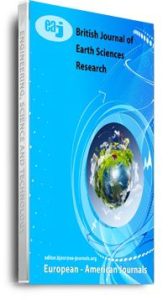Granitic Gneiss and Banded Gneiss make up the bulk of the local rock types, and quartz veins are the most common intrusions seen there. Tectonic upheavals in the earth’s crust are responsible for the region’s structural features, including as foliations, folds, joints, and fissures. The goal of this research is to integrate several scientific techniques to subsurface structure definition. For this study, 16 Vertical Electrical Sounding (VES), petrophysical study, and background knowledge of geology were used to delineate subsurface rock. The Schlumberger array with a maximum electrode separation of 300m was employed for VES. Elete’s true aquifer resistivity map shows that the South-Eastern and North-Eastern axis has relatively low resistivity values, which may indicate the presence of an aquiferous zone, while the North-Central and Southern regions have a wider range of resistivity values, which may not be consistent with a water-bearing zone. Additionally, petrographic analysis of the rock reveals that the mineral composition of Granitic Gneiss is Quartz (41.72%), Plagioclase (10.79%), Biotite (25.17%), Muscovite (19.42%), and Opaque (2.87%). While biotite makes up the granite gneiss. Biotite (45%), Muscovite (9.93%), Quartz (36.87%), Plagioclase (4.26%), and Opaque (3. 55%).Hydrogeologically, it stands to reason that Elete and its surroundings are situated in a region with medium to good groundwater potential based on the information at hand and the results of the geophysical investigation. Weathered/fractured basements are anticipated to contain productive aquifers.
Keywords: Nigeria, Resistivity, elete, gneiss, rock aquifer

